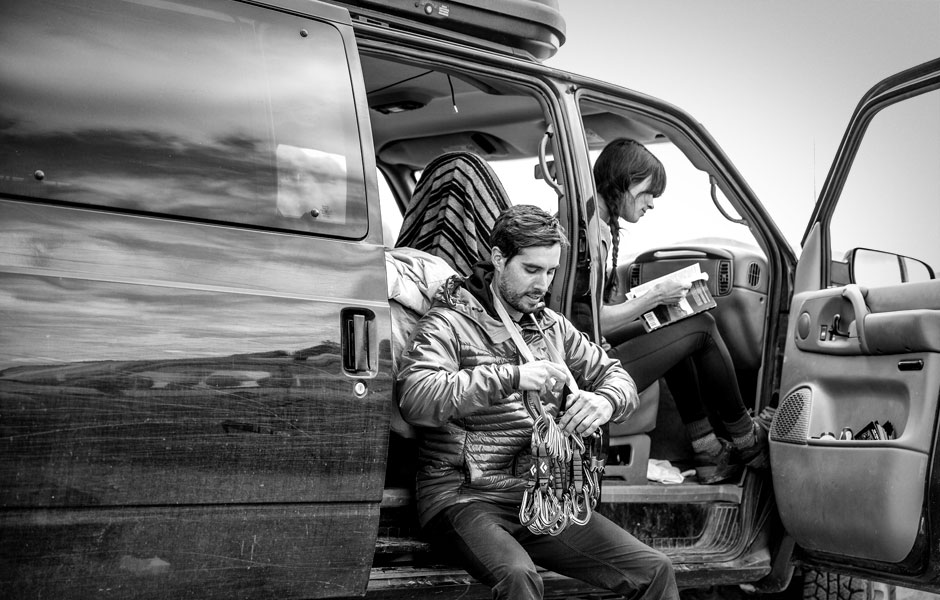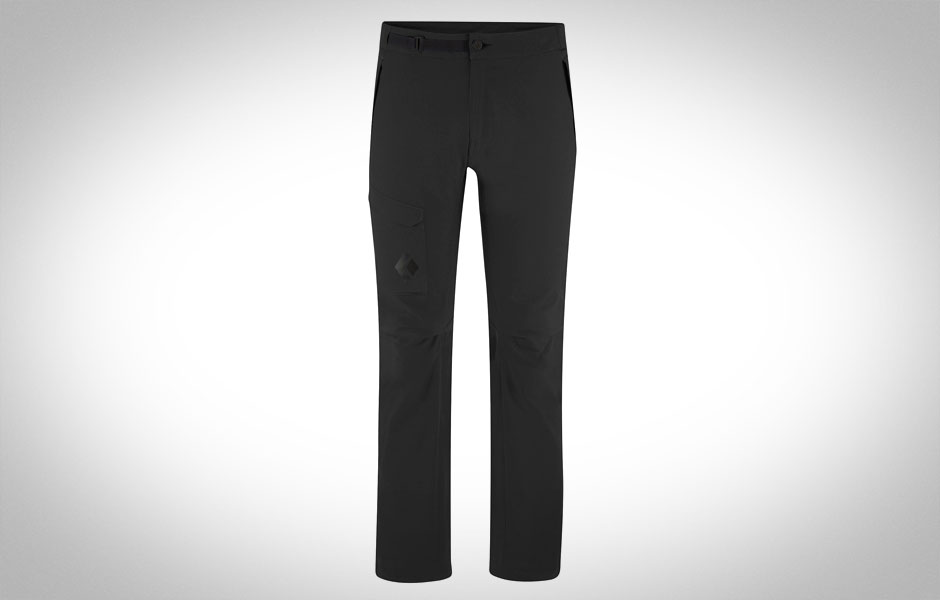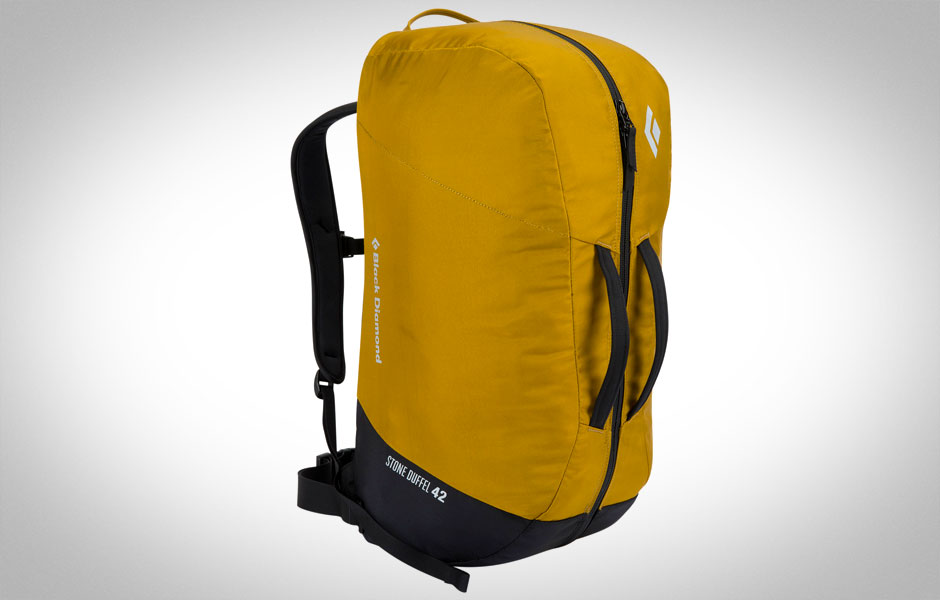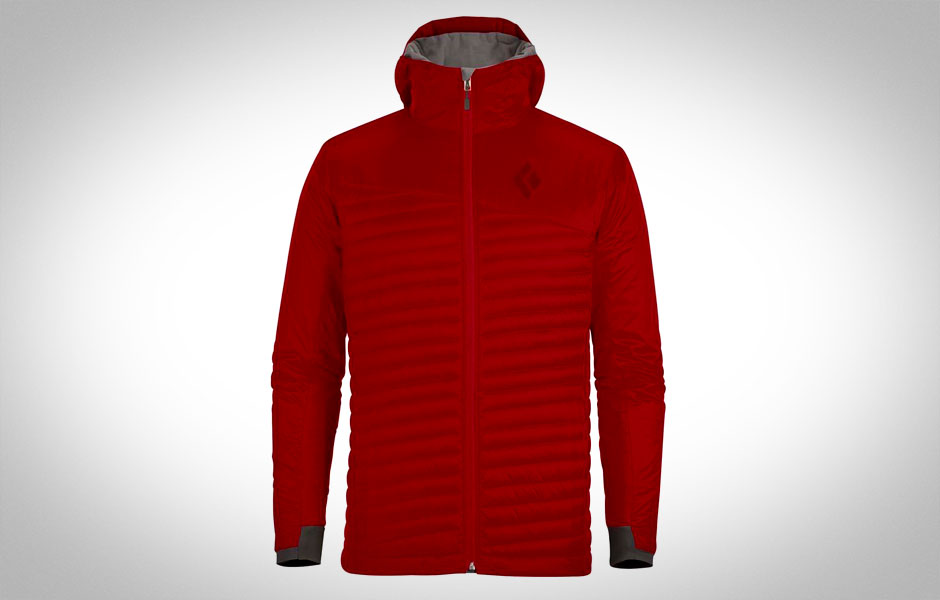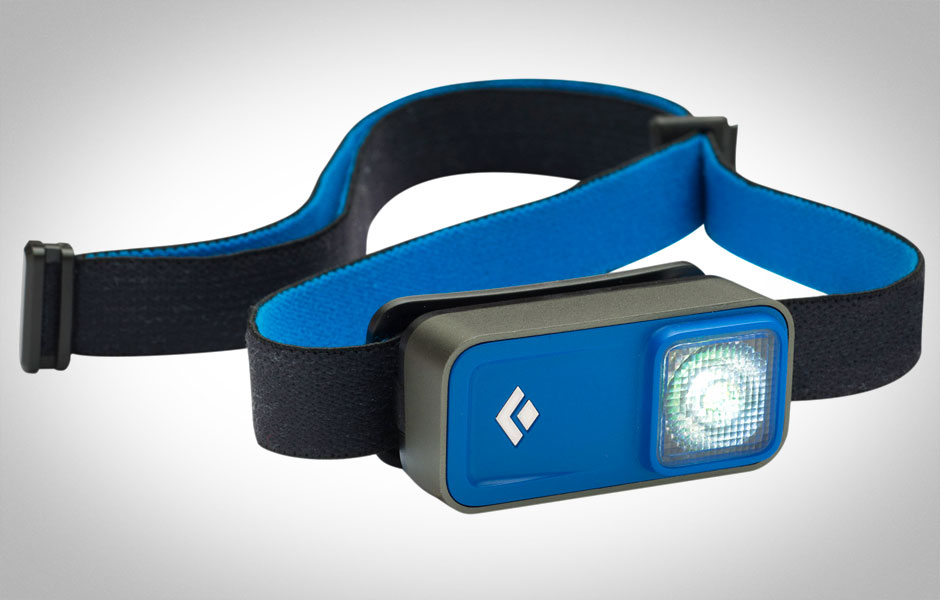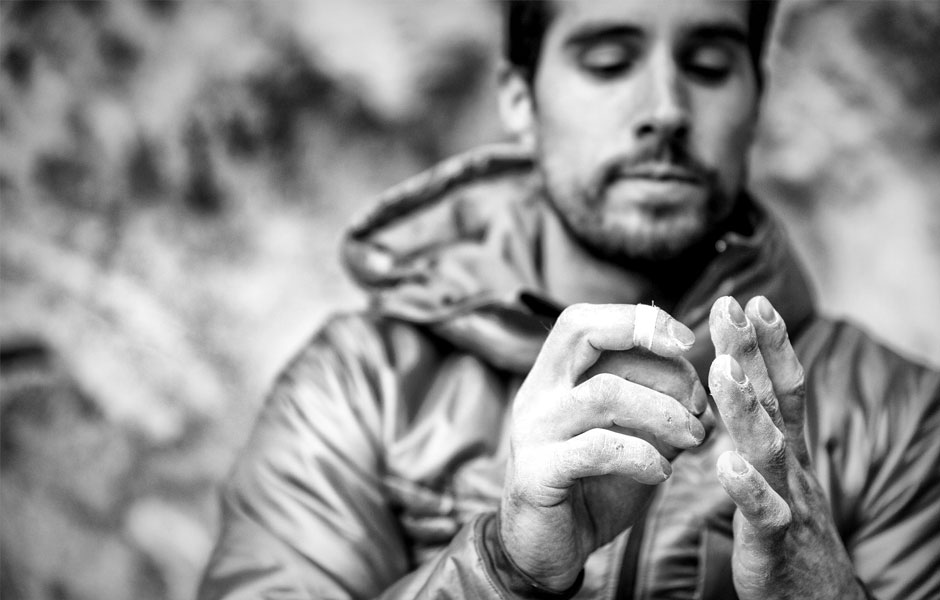Dirtbag climbers and road trippers are notorious for two things: smelling like they haven’t had a shower in weeks (probably closer to months) and picking bomber gear and apparel that will last through hard seasons’ worth of use. When we’re out on training rides, climbs, and runs here in Utah’s Wasatch Range, hometown brand Black Diamond is almost a standard uniform for dirtbags of all kinds. Of course, with hundreds of miles of trails, dozens of world famous climbs, and a handful of ten and eleven thousand foot peaks within sight of their headquarters, it’s easy to see where Black Diamond get’s their mantra of “Live, Climb, Repeat.” If your adventures this year take you off trail and into the high country, you couldn’t ask for a better line up of high altitude ready gear.
Related: Pack It In: Climbing Essentials | Jimmy Chin’s Meru
B.D.V. Pants ($189)
The B.D.V.’s are the new standard for mountain travel. Made of a burly Schoeller stretch-woven softshell material, they are further treated with award winning Nanosphere DWR at the fiber level, ensuring they repel everything from summit thunderstorms to stains. The built in ladder-lock belt sits flat under a climbing harness, and articulated knees help when you’re sending that mandatory heel hook on your latest project climb. These are the pants any seasoned alpine adventurer should be reaching for.
Stone Duffel 42 ($90)
Built for hauling gear to your favorite crag, we found the Stone Duffel to be the perfect bag for all our odds and ends on summer road trips. It’s hauled everything from a full rack of cams to a weekend’s worth of extra clothes (and beer). Simple construction and extremely abrasion resistant 1260-denier nylon round this pack out nicely.
Hot Forge Hybrid Hoody ($249)
From early mornings in the alpine to chilly nights in your favorite mountain town, the Hotforge Hybrid Hoody is Black Diamond’s premier four season layering piece. In the body of the jacket insulation is a 70/30 split of hydrophobic down and Primaloft insulation. Heavily exposed areas on the hood, shoulders, and sleeves have straight synthetic Primaloft Gold. It packs into its internal mesh pocket, so you won’t have an excuse to leave it at home on your next hike.
Ion Headlamp ($25)
We spotted this headlamp at last year’s OR Show and fell in love. The Ion is powered by two AAA batteries, and packs in eighty lumens of output. The innovative swipe on/off makes it hard to accidentally turn on in your pack, but easy enough to operate with gloves on. Dual white and red (night vision saving) modes can be swapped easily with right and left swipes. The tiny package makes it easy to throw in your work bag as a back up, or in your pocket for a sunset climb.
Technician Shirt ($59)
This comfortable button up short sleeve is at home on serious slab climbs in Boulder, CO, but looks equally cool making the rounds in your Monday morning sales meetings. Breathable cotton-poly fabric provides the right balance of quick drying and temperature control. A generous cut and climbing specific underarm gussets help you move without restriction when your hike turns vertical. Don’t blame us when you’ve stopped wearing anything else this summer.
Images Courtesy of Black Diamond
